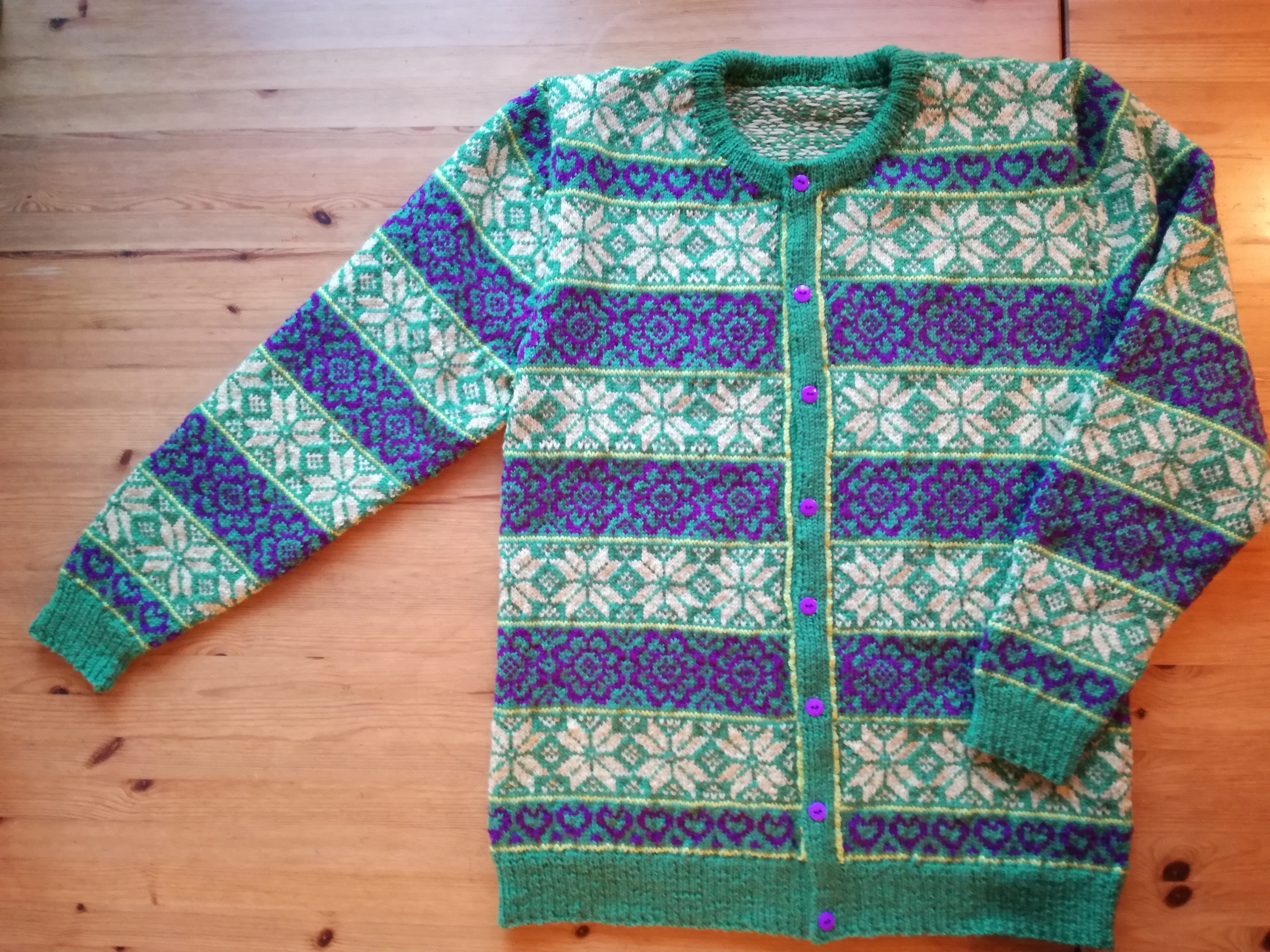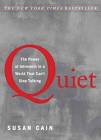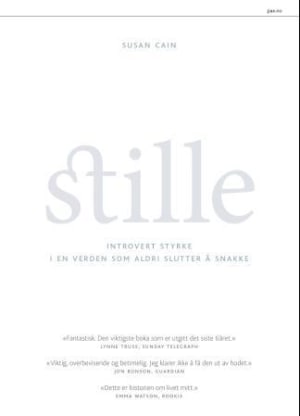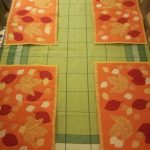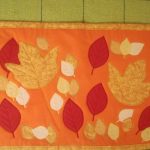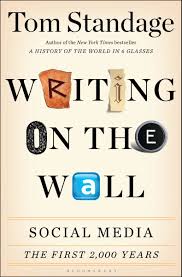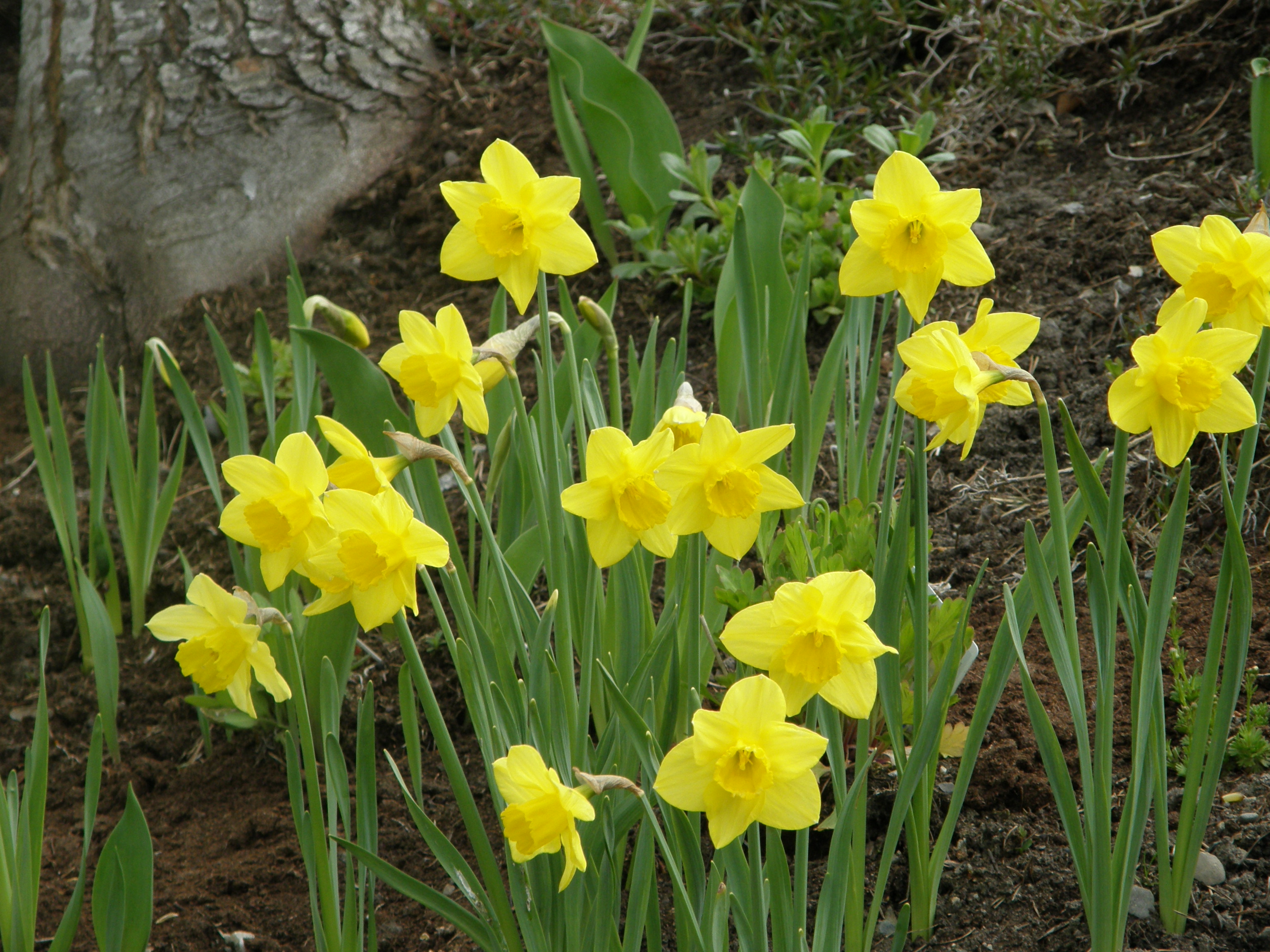Most of the time when I make knitted garments, I start with a pattern, change the colors a bit, choose the right size and away I get started knitting. But every now and then I decide to make my own pattern.
In Norway, because of the cold winters, there are still many people who use wool sweaters, often made by a loved one. My husband made a request for a cardigan, so that he didn’t have to pull it over his head and could just slip his arms into it.
I started by looking through my patterns. I also borrowed books from the library. I went to one of the yarn stores and found a nice green on sale and bought all they had of a color that was being discontinued, plus a bright yellow. I went to another yarn store just a few blocks away and found more of the same green yarn, same color number, but different lot number. I bought what they had plus a different duller yellow. Now I had some colors to work with. The two different dye lots of green did not seem to be different at all.
As I worked with the colors and patterns I had, my husband said that it needed another color, perhaps red. So I went back to the store, and found a purple on sale. Now I had bought sufficient yarn to make a cardigan, I had four colors, and just needed to decide what I wanted to do with it. I had mostly green, two different yellows and a dark purple. The pattern I decided on had to suit the amount of yarn I had in each color.
One of the books from the library showed lots of two color patterns for knitting. I have always liked the star pattern that is very common here in Norway. I found a flower pattern that was on 19 stitches, a number that as Bahá’ís we both like. I started knitting some of the patterns I liked, trying to see what worked, how the colors fit together and how much I might use. Some patterns I liked, and some just didn’t work at all.
Then I knit a sampler to try out the colors and the patterns.
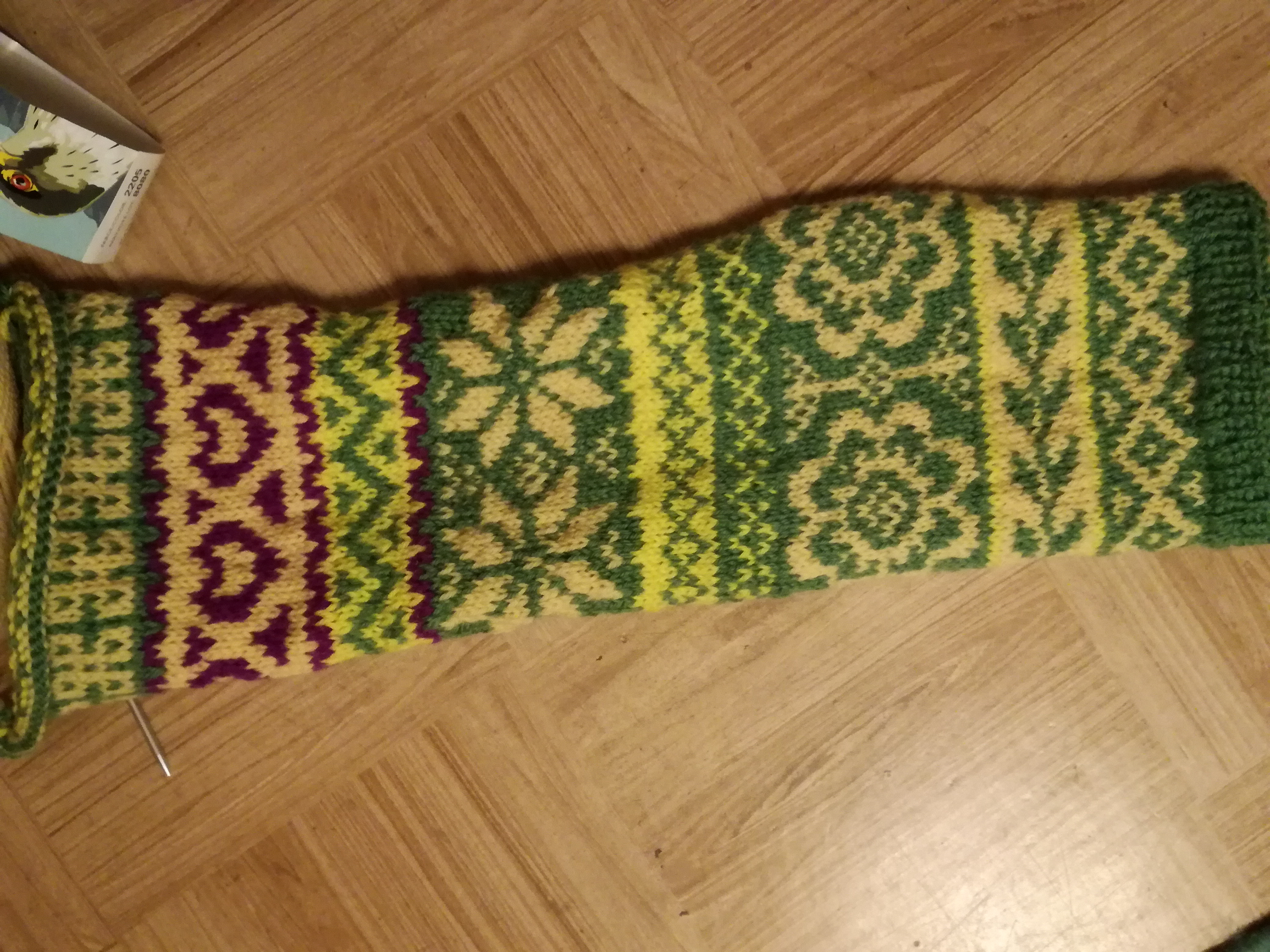
I decided on the following motifs, each row being separated by a single bright yellow row.
- the main background color was to be green, which was the color I had the most of
- a row of purple hearts around the bottom of the sleeve and the body of the cardigan
- alternating rows of yellow stars and purple flowers
- a single row of bright yellow was used to separate each row of pattern and also used to separate the front band from the rest of the garment
As it was a cardigan that was wanted, I decided to knit back and forth, and included the front bands as I knit up the garment. The sleeves had a cap and were sewn in afterwards. I worked out ahead of time how many rows would be worked so that the patterns matched up between the sleeves and the body, and that I ended with a full pattern at the shoulder. The sleeves and the body of the cardigan were made the same length as this made working the pattern much easier.
I was very happy with the finished result and I had fun making the garment. The cardigan is used a lot so the wearer seems to be happy too.
